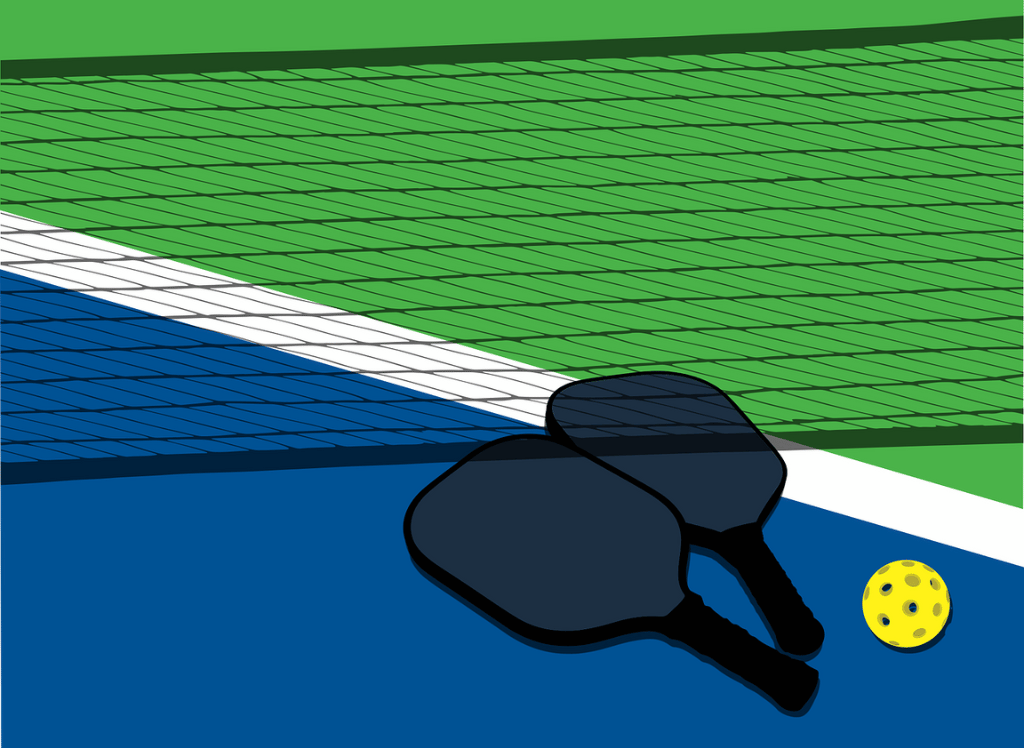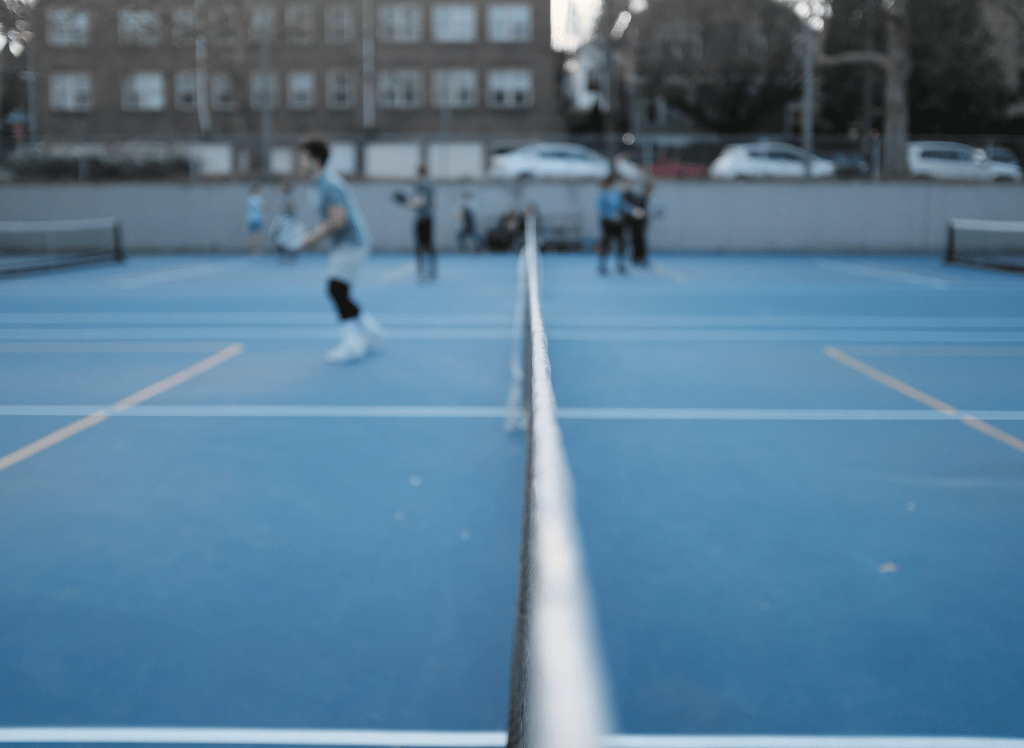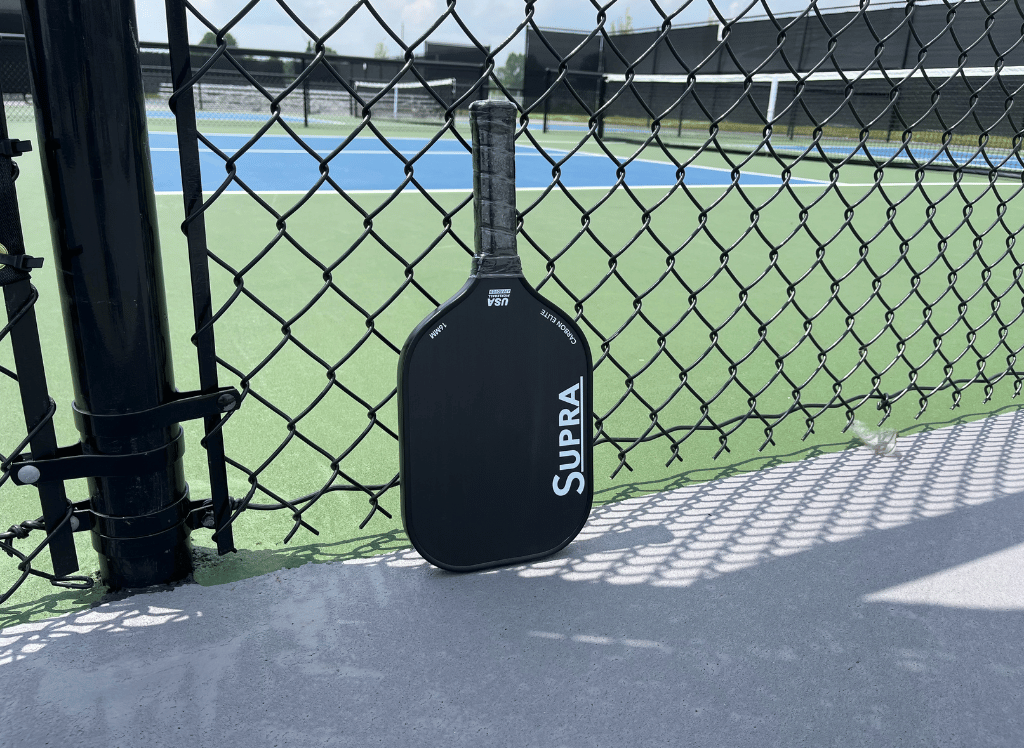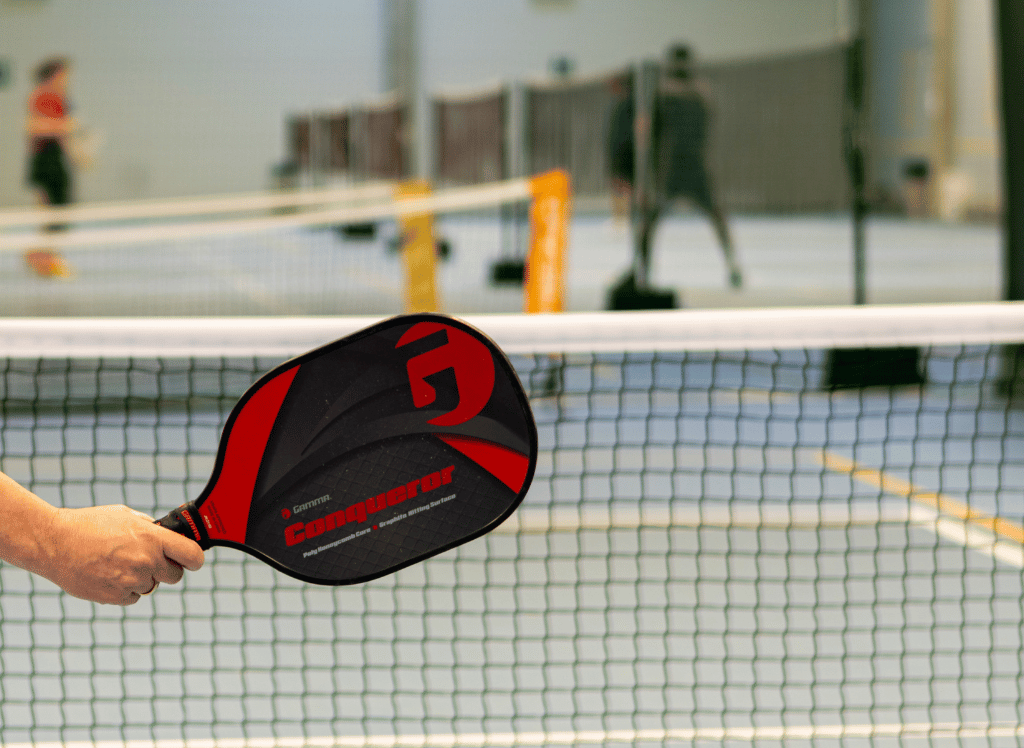If you're curious about the exciting and fast-growing sport of pickleball, you're in the right place. As a beginner myself, I wanted to create this blog to share some of the insights I’ve picked up during my intro class to pickleball. Here, I'll share a few tips and tricks I’ve learned so far, perfect for anyone looking to get started with this fun and social sport.
Imagine a tennis court shrunk down to the size of a badminton court, and you've got the pickleball court. This game is not just a sport, it's a social event, a community builder, and a fantastic way to burn off those extra calories from last night's pizza. Whether you're a seasoned player or someone who just discovered that sports exist, pickleball welcomes you with open paddles 😃
The pickleball game is played with a hollow plastic ball, reminiscent of a wiffle ball, and a paddle that looks like it was borrowed from a giant game of ping pong. The USA Pickleball Association has set the rules, ensuring that everyone from beginner players to competitive athletes can enjoy the game. So, grab your paddle, and let's dink into the basics of how to play pickleball.
The Pickleball Court and Equipment
The court measures 20 feet by 44 feet. The net is slightly lower than a tennis net, standing at 36 inches at the sidelines and 34 inches in the center. The court is divided into two service courts on each side, with a non-volley zone, commonly referred to as the kitchen, extending 7 feet from the net.
To play pickleball, you'll need a pickleball paddle and a hollow plastic ball. The paddle is larger than a ping pong paddle but smaller than a tennis racket, making it perfect for those who can't decide which sport they love more. The ball is designed to bounce less than a tennis ball, adding a unique challenge to the game. With your gear in hand, you're ready to hit the local courts and start your pickleball journey.
Basic Pickleball Rules
Understanding the basic rules is essential for anyone looking to play pickleball. The game begins with a serve, which must be made diagonally to the opposing team's service court. The server's feet must remain behind the baseline until the ball is contacted. Only one serve attempt is allowed, and if a fault occurs, the server loses their turn.
The two-bounce rule is a fundamental aspect of pickleball. After the serve, the ball must bounce once on each side before players can volley it. This rule prevents the serving team from gaining an unfair advantage and keeps the game fair and exciting. Once the ball bounces on both sides, players can hit volleys, ground strokes, or drop shots to outmaneuver their opponents.
Serving in Pickleball
The first serve is made from the right side of the court, and the server continues serving until they commit a fault. The serve must be underhand, with the paddle contacting the ball below the server's waist. The ball must land in the diagonally opposite service court, and if it touches the non-volley zone line, it's considered a fault.
In doubles play, each team has two servers. If the first server loses their serve, the second server takes over. (The exception to this rule, is the team that started the game with the serve). Once both players have served and lost their points, the serve goes to the opposing team. This rotation keeps the game dynamic and ensures that everyone gets a chance to serve. Mastering the serve is crucial for gaining an edge over your opponents and scoring points.
The Non-Volley Zone (Kitchen)
This rule prevents players from dominating the net and encourages strategic play. If a player volleys the ball while standing in the non-volley zone, it's considered a fault, and the opposing wins the rally.
Players can enter the non-volley zone to hit a ball that has bounced, but they must exit immediately after. This rule adds an extra layer of strategy to the game, as players must decide when to approach the net and when to hang back. Understanding the non-volley zone is key to becoming a skilled pickleball player and avoiding costly mistakes.
Scoring in Pickleball
Pickleball uses rally scoring.
Games are typically played to 11 points, and a team must win by at least two points. Some matches may be played to 15 or 21 points, depending on the rules set by your league.
The score is announced before each serve, with the serving team's score called first. Then the opposing team's score, and lastly the server if playing doubles.
If the serving team wins the rally, they score a point and continue serving. If the receiving team wins the rally, they gain the serve but do not score a point. This scoring system keeps the game fast-paced and ensures that every point counts.
Strategies for Beginners
Beginners should focus on mastering the basics before diving into advanced strategies. Start by practicing your serve and getting comfortable with the two-bounce rule. Work on your footwork and positioning to ensure you're always ready to return the ball. As you gain confidence, experiment with different shots, such as drop shots and volleys, to keep your opponents guessing.
Playing with more experienced players is a great way to improve your skills. Watch how they move on the court and try to mimic their techniques. Don't be afraid to ask for tips or advice, as most pickleball players are happy to share their knowledge. With practice and patience, you'll soon be playing like a pro.
Common Mistakes and How to Avoid Them
One common mistake beginner players make is standing too close to the net. This position leaves you vulnerable to lobs and makes it difficult to react to fast-paced shots. Instead, position yourself a few feet behind the non-volley zone line, allowing you to move forward or backward as needed.
Another mistake is failing to communicate with your partner in doubles play. Clear communication is essential for coordinating your movements and avoiding collisions. Develop a system of signals or calls to indicate who will take the shot. By working together, you can cover the court more effectively and increase your chances of winning.
Pickleball Doubles vs. Singles
Pickleball can be played in singles or doubles, each offering a unique experience. In doubles, teamwork is crucial, as you must coordinate with your partner to cover the court and execute strategies. Doubles is a more fast paced game and a more social and are a great way to bond with friends or family.
Singles play, on the other hand, is more physically demanding and requires excellent stamina and agility. You'll need to cover the entire court on your own, making quick decisions and executing precise shots.
The Social Side of Pickleball
Pickleball is not just a game; it's a community. Many local courts host open play sessions, where players of all skill levels can come together and enjoy the sport. These sessions are a fantastic opportunity to meet new people, make friends, and learn from more experienced players.
The social aspect of pickleball is one of its biggest draws. Whether you're playing in a rec center or participating in a tournament, you'll find a welcoming and supportive community. So grab your paddle, hit the courts, and experience the joy of pickleball for yourself.
Pickleball FAQ
What is the two-bounce rule in pickleball?
The two-bounce rule requires that the ball must bounce once on each side of the net before players can hit volleys.
Can you volley in the non-volley zone?
No, players cannot volley the ball while standing in the non-volley zone. If a player volleys the ball in this area, it's a fault.
How is scoring done in pickleball?
Pickleball uses rally scoring, where only the serving team can score points. Games are typically played to 11 points, and a team must win by at least two points.
Summary
Pickleball is a fast-paced, exciting game that combines elements of tennis, badminton, and ping pong. With its unique rules and social atmosphere, it's no wonder that pickleball is gaining popularity worldwide. By understanding the basic rules, practicing your skills, and embracing the community, you'll be well on your way to becoming a pickleball pro.









